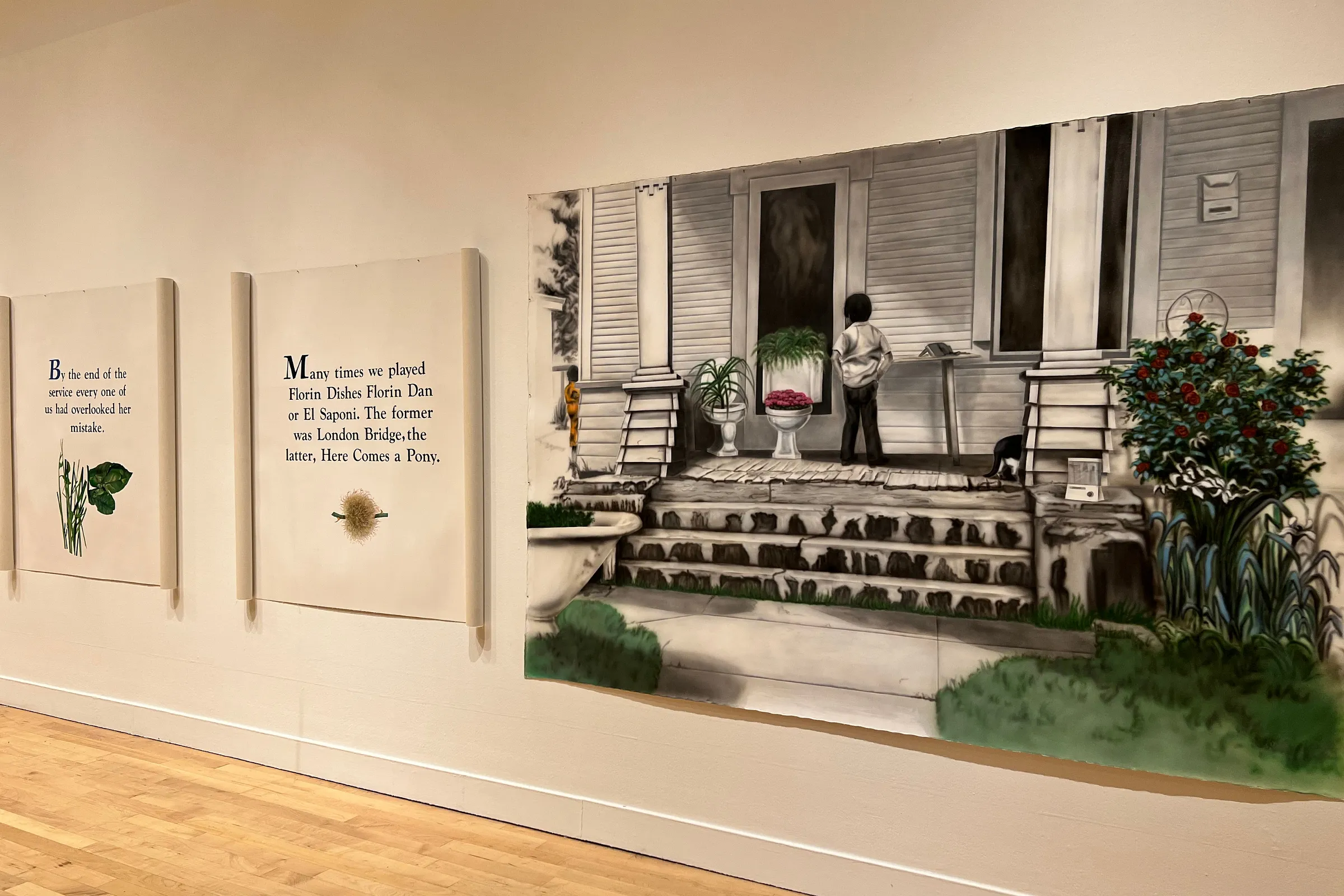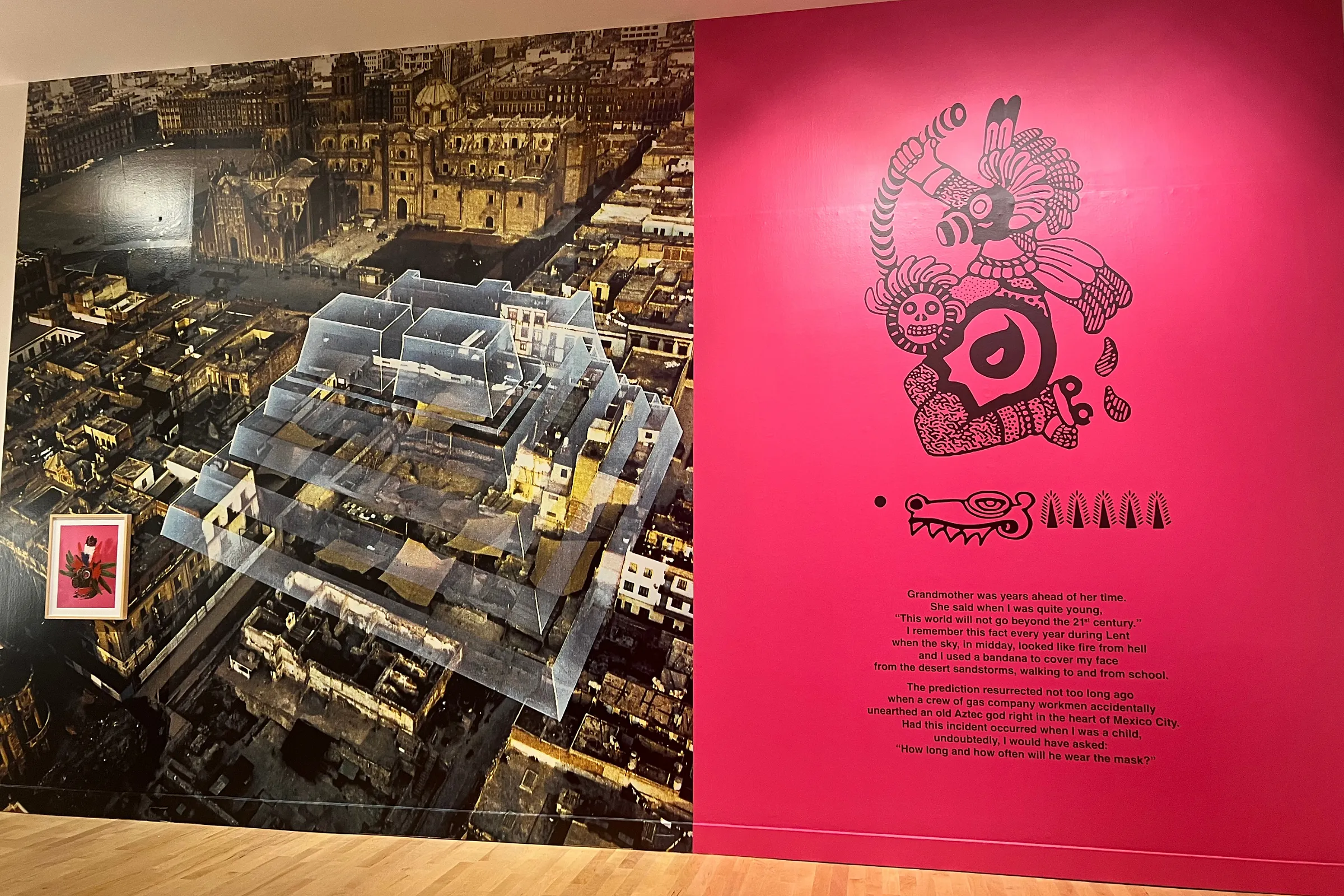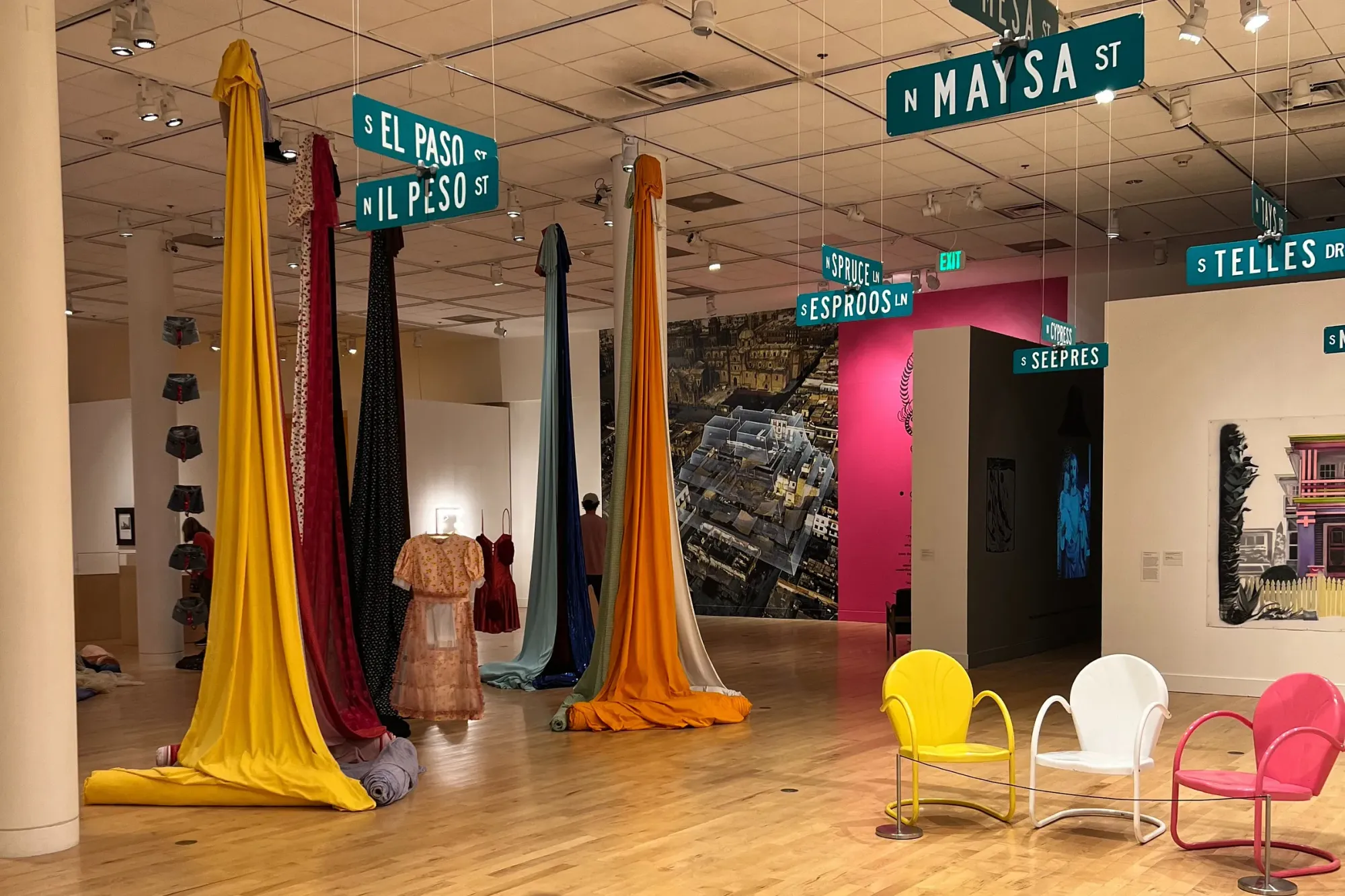Celia Álvarez Muñoz: Breaking The Binding
Philbrook Museum of Art
Tulsa
May 31, 2024
According to the ACLU, nearly two out of three people in the United States live within the 100-mile border zone between the U.S. and Mexico. U.S. Customs and Border Protection claims that its jurisdiction spans 100 miles into the interior of the United States from any land or maritime border. The federal government asserts the power to conduct certain warrantless stops within those 100 miles, including interrogating children on their way to school, parents on their way to work, and families doing banal things like grocery shopping, all without any reasonable suspicion or warrant. The U.S. border is a highly contested space, particularly the southern border. Just this week, the Biden-Harris Administration announced new measures that restrict asylum eligibility and significantly increase the consequences for those who enter the country.
Tulsa is not geographically within the border zone, but it is home to tens of thousands of immigrants who carry those stories with them every day. Philbrook’s current special exhibition, Breaking the Binding—the first career retrospective of conceptual artist Celia Álvarez Muñoz (b. 1937, El Paso, Tex.) — brings the complexities of the border into closer view through over 35 large-scale installations, bookworks, photographs and sculptures that span a four-decade career. The works reveal Muñoz’s personal connection to the borderlands of the United States and are infused with color, humor, intentional mistranslations and performative interplay.
Postales (Postcards) (series 1988), one of the first works you encounter in the show, is a multimedia installation that imagines a neighborhood on the border of English and Spanish. Defining the space is a series of street signs written in Spanish and Spanglish: “S El Paso St / N Il Paso St,” “S Mesa St / N Maysa St.” A collection of large-scale airbrushed paintings of house facades and porch scenes hang on the walls.
In one of them, Duchamp Baños (Duchamp Restrooms), we see the back of a child standing on a porch next to two toilets that have been retrofitted into planters. The back half of a family pet is visible before it disappears behind a porch column. There are no door knobs visible, no identifying markers like house numbers, and the windows are blacked out. In a talk at the exhibit’s opening, Muñoz remarked that she wanted to “maintain privacy for the inhabitants,” hence, there is no way to enter the homes; one can only view them from their exterior. This privacy reflects the posture many residents in border towns must maintain — they are positioned within a space where their privacy can be violated at any moment. In this work, Muñoz protects her neighborhood from such interrogations.

Defining the space of the Postales installation is a small vitrine containing a series of black and white postcards and envelopes featuring homes that have been colored by the artist. They are preemptive miniatures of the large Postales paintings that dominate the walls. Muñoz described the process of enlarging the postcards into monumental paintings as a gentle but necessary takeover of her family home. One challenge of painting on such a large scale was solved by adopting an airbrushed technique. Since the pieces were too large to create in her walk-in-closet-sized studio, Muñoz cleared away furniture and her children’s toys to claim part of her living room for her art practice — the only space in the house large enough to accommodate such oversized canvases.
The works in this show were made after Muñoz moved to Arlington, Tex., with her husband and two young children, where she enrolled in graduate school at North Texas State University, now known as University of North Texas in Denton. Committed to her MFA, Muñoz made the two-hour trek to and from Denton, where she studied under Vernon Fischer and Al Souza, who redirected her toward a conceptual-based multimedia practice and away from her roots as a commercial artist and art educator. While attending NTSU, she began one of her groundbreaking series, Enlightenment.
Seen in another gallery within the exhibition, Enlightenment directly relates to the title of the show and her process of unbinding or freeing a story from its structure. One work in the series is a selection of photographs that depict an apple in various stages of consumption, with the final image of the apple replaced with a snake. Referencing biblical themes, the text below each image tells a story of shame surrounding a young girl’s exposure when a gust of wind unexpectedly blows her skirt up, revealing that her mother forgot to dress her in underwear.

Related to themes of exposure and unbinding is Fibra (Fiber) (1997), a monumental installation that takes shape in bolts of brightly colored patterned fabric that define a space in the center of the galleries. Modified and sexualized articles of women’s clothing hang within the vertical streams of fabric: a dress with cut-out transparent patches of fabric strategically placed over the pelvis; a red dress with bunches of fabric exaggerating the breasts; and denim shorts cut into thongs that reference the early sexualization of girls by the fashion industry. The work is both a critique of the labor often demanded of women in poor working conditions and the performativity of gender thrust on girls at an early age.
Muñoz’s inventive critique takes another form in Petrocuatl (1988), a wall-sized work centered within the exhibition space. A large vinyl photograph extending from floor to ceiling shows an overlay of an ancient site atop an image of Mexico City’s central square, close to Templo Mayor (High Temple), where in 1978, workers accidentally discovered an Aztec ruin while laying electrical cables. To the right of the city scene is a glyph of a rollerskating oil god named Petrocuatl — a god invented by Muñoz.
Part of the story surrounding this made-up Aztec deity is a relic the artist created and photographed, which hangs in a frame on top of the vinyl photograph. This object is a World War II gas mask decorated with feathers and beads, mimicking an ancient ethnic artifact. In 1981, while Muñoz was an MFA student, she presented this relic to her classmates as a genuine archeological artifact in a performative lecture; seven years later, it joined the Templo Mayor story, the wall-sized photograph, and the Petrocuatl glyph as an installation at the Kimbell Art Museum in Texas. The name of her god is an irreverent mixing of culture and language, combining the English prefix for “petroleum” and the Nahuatl word for “serpent.” Like many of the works in this retrospective, Petrocuatl reacts to colonial fascinations with ancient artifacts that often supersede an appreciation of genuine contributions to art and culture from contemporary artists like herself.

Works like Please Don’t Paint My Brown Eyes Blue (1994) — a piece completed by the audience through viewing the print with 3D glasses — and Which Came First?—a series of photographs of eggs, which invite the audience to empathize with the confusing process of learning a new language — ask the viewer to imagine another’s experience, take a closer look at our own experiences and suspend our familiarity and comfort with language and symbols. This process makes plain the mixing of cultures and influences that can privately and personally engender “otherness” but simultaneously make America’s landscape and culture all the more rich and bright.
Celia Álvarez Muñoz: Breaking the Binding is co-curated by Isabel Casso, Associate Curator at MCASD, and Dr. Kate Green, Chief Curator & Nancy E. Meinig Curator of Modern & Contemporary Art at Philbrook Museum of Art and was organized by Museum of Contemporary Art San Diego. The retrospective at Philbrook is open through August 25.






